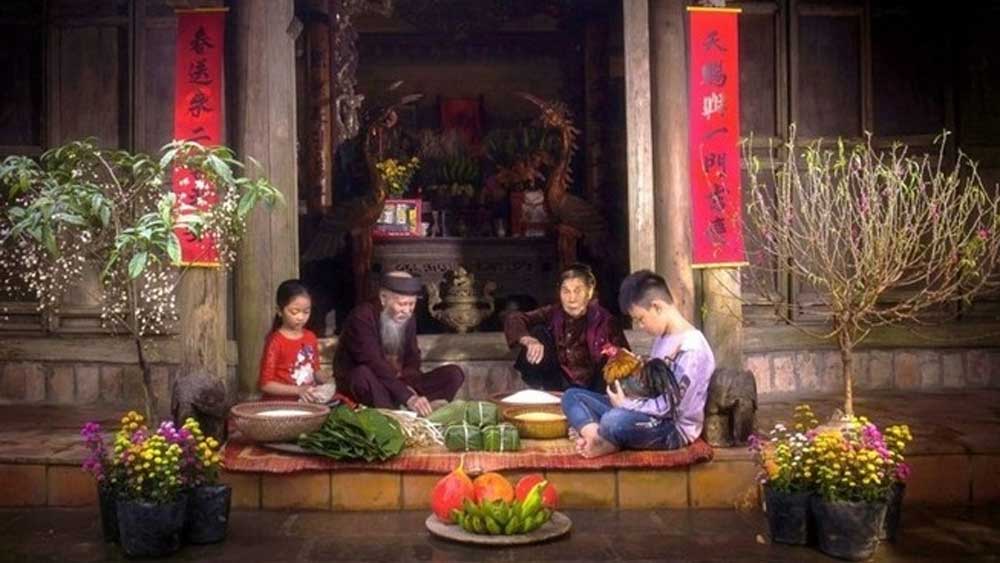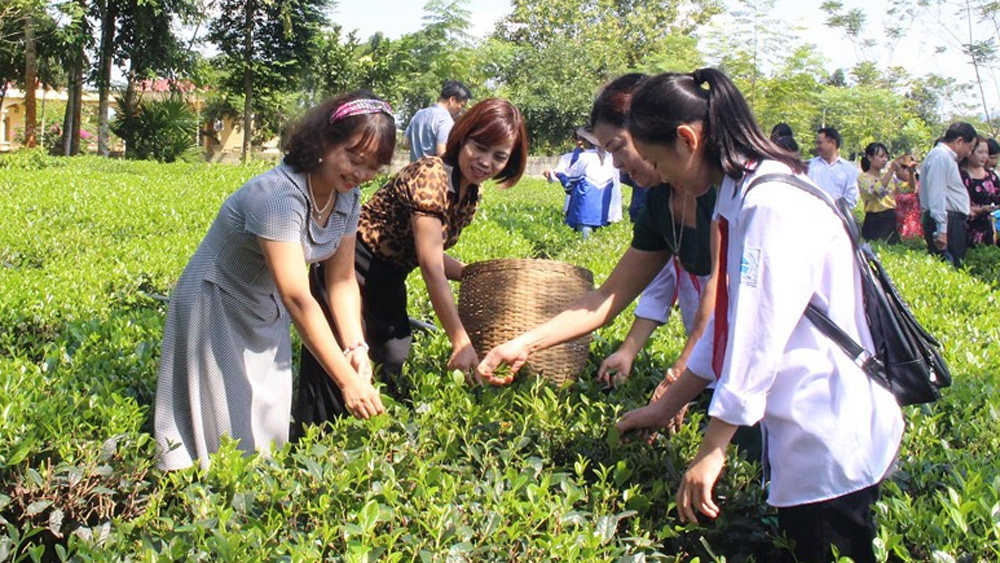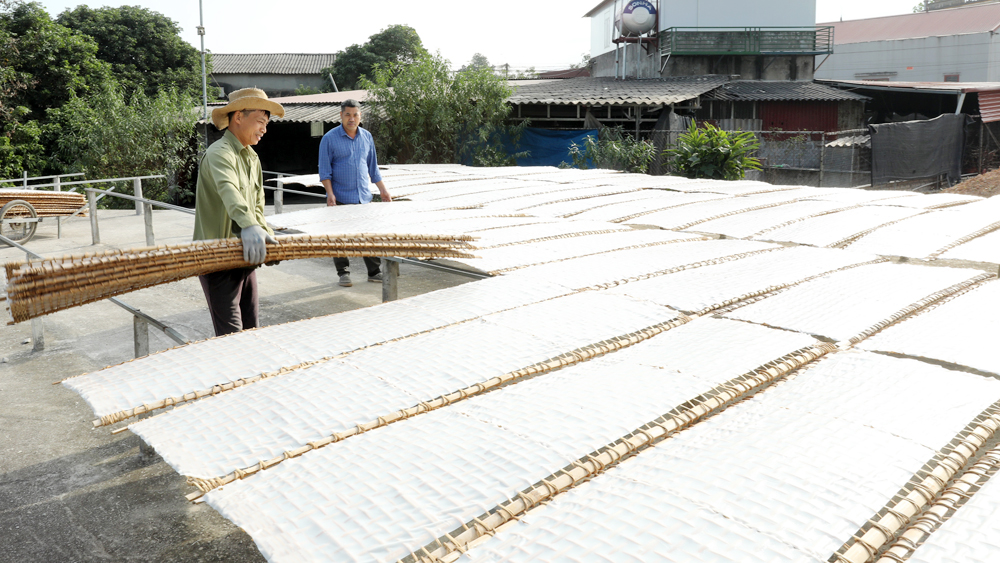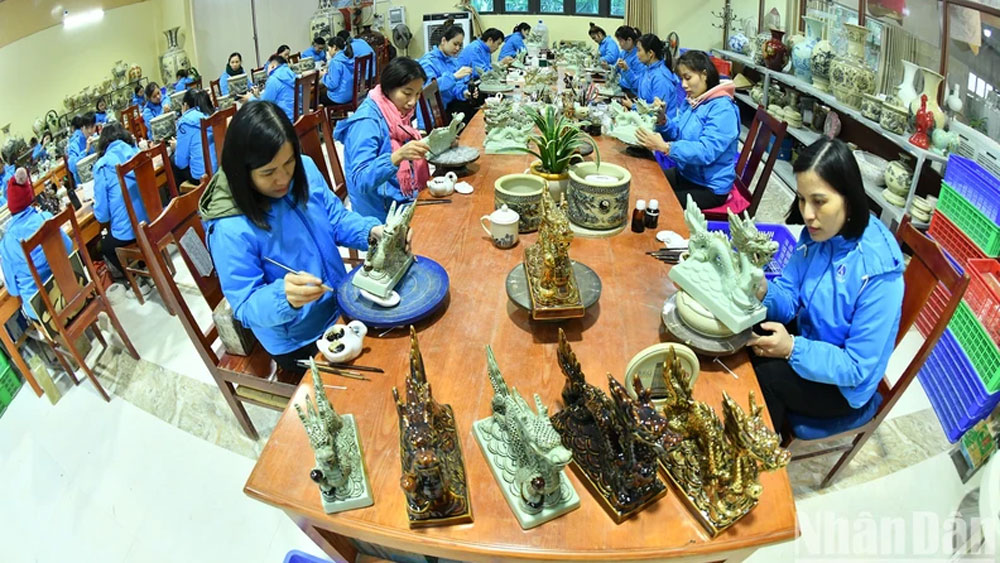82-year-old woman keeps unique Cham pottery techniques alive
After talking to visitors cheerfully for a few minutes, Hieu puts her bare hands on a mound of clay lying on a wooden pottery wheel and slowly moves them. The clay soon starts taking shape.
 |
|
Don Thi Hieu demonstrating the art of Cham pottery making. |
She is completely focused on the work. The tourists are focused on the woman's hands that are moving rhythmically. Magically, within a few minutes the clay is transformed into an unblemished round pot shaped like a full moon.
Her work finished, Hieu looks up and laughs and talks to visitors about her life and about pottery, which she has practiced for almost 70 years.
Traditional pottery is an important cultural feature of the Cham, descendents of the Champa Kingdom that spanned large parts of central and southern Vietnam in the 9th-10th centuries. It now exists mainly in Bau Truc and Binh Duc pottery villages in Vietnam's south-central provinces of Ninh Thuan and Binh Thuan.
Bau Truc is a popular destination for both domestic and foreign travellers, while Binh Duc is relatively unknown. Binh Duc is also called Goi pottery village, which in the Cham language means a pot. In the past pottery making was only meant for skilled Cham women. Binh Duc is in Phan Hiep Commune, Bac Binh District, 65 km from the popular resort town of Phan Thiet.
 |
|
A worker adds red basalt soil to pottery to infuse color. |
Hieu is considered the most skilled potter in Binh Thuan. Her parents died when she was a child. She received training in the village and also honed her skills by watching other potters.
In 1996 she was invited to Japan to demonstrate her ceramic firing technique at a fair on traditional craft villages. She recalls that Japanese, Chinese, Indian, Thai, and Philippine ceramic artisans were very impressed with the traditional Cham way of making pottery outdoors.
The Cham artisans in Go Village do not use ceramic kilns, coal or blowers, yet their products are not broken or cracked. There are two types of Cham ceramic products, household pottery including pots and pans and fine-art ceramics.
Hieu says making traditional Cham pottery a "very hard job" yet it "does not sell much."
The work has many stages of which the first is selecting clay. The villagers have to travel more than a dozen kilometers to find good clay, which is usually taken from a depth of two meters. The ideal material has a silky yellow color as if mixed with metal.
The clay is crushed, watered and left for two days to get the right softness. It is then mixed with fine sand to give it both flexibility and brittleness.
After the clay is softened, the potter takes a small lump and puts it on top of a wheel at around their waist level when standing. Then, uniquely, they go round to make the product. Cham pottery is not made by sitting in one place and rotating a wheel like it is done almost everywhere else.
When an item is finished, it is dried under the sun for one day.
The potter then uses a piece of cloth to rub it to impart shine before putting it in an outdoor fire pit. The Cham people have a common firing place where potters bring their products to be baked together.
Since the Binh Thuan clay does not tolerate high temperatures, the kiln has to be taken outdoors since the wind helps lower the heat. "The perfect time to make pottery is when the weather is sunny and windy since it will bake evenly," Hieu says.
The best time is at around 10:30 a.m. during summer since it is sunny and windy then. An experienced potter will know how to control the temperature and when to take the pottery items out.
 |
|
Patterns on Cham pottery created by using natural materials. |
Cham ceramic decorations are also unique since they use natural dyes from leaves, forest fruits and red basalt soil. Artisans pick leaves and bark in the forest and soak them in water for five or six days. After the pottery is baked, potters quickly sprinkle the water on the products to create random black and red patterns.
Besides, with aluminum and other metal products available aplenty, people have little demand for pottery now.
But Hieu's love for Cham pottery techniques remains strong. She still goes to the local Cham Cultural Exhibition Center to demonstrate pottery making techniques to visitors and researchers.
She also teaches people in Binh Duc Village so that they can show the art of pottery to tourists. Her eyes still light up when talking about pottery, and pottery still plays an important part in the cultural life of the Cham people.
Source: VnExpress
 Bắc giang
Bắc giang















Reader's comments (0)